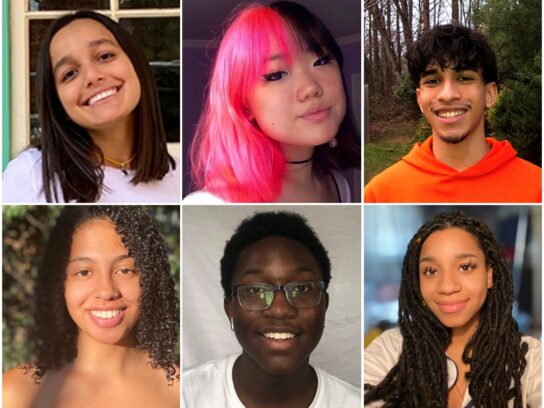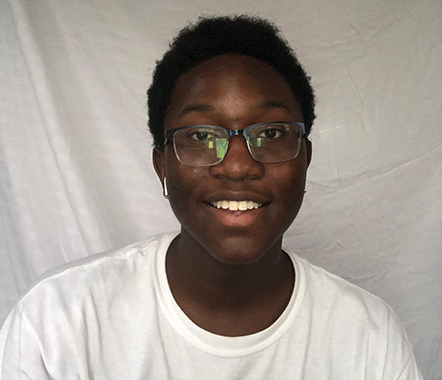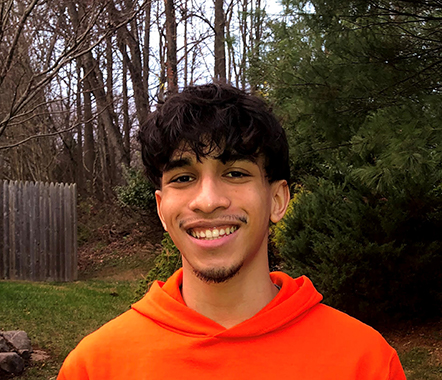
When Kyson Taylor, a junior at Rockville’s Richard Montgomery High School, winds the same path to his psychology class every day, he can feel the eyes following his movements.
Despite having few direct interactions with his school resource officer — the police officer assigned to monitor Richard Montgomery — the man watched him intensely every day on that route.
“It makes me feel very uncomfortable,” Taylor said. With frequent police murders and abuse in the country, especially against people of color, he said it was hard knowing that “an emblem of a racist force” was “watching me walk to school in a place where I’m supposed to feel safe and protected.”
Taylor’s watcher is one of 26 police officers assigned to work in Montgomery County Public Schools as part of the controversial SRO program.
Proponents argue that SROs act as helpful liaisons between schools and law enforcement, make schools safer and provide mentoring. Opponents counter that many students fear SROs because of their interactions with police outside of school and cite data showing disproportionate arrest rates among students of color.
Taylor is not alone in his discomfort with the police presence. The six students interviewed by Montgomery Community Media said either they or their friends do not feel safe with SROs in schools.
- “I don’t feel safe at all with SROs around because of interactions that I’ve had with police outside of school,” said Lauren Payne, a senior at Richard Montgomery High School. (Photo courtesy of Lauren Payne)
- Kyson Taylor, a junior at Richard Montgomery High School, said he wants to see mental health resources prioritized over police in schools. “It would be great to know that if I’m having an anxiety attack at school, there is a clinical social worker or licensed therapist to speak to,” he said. (Photo courtesy of Kyson Taylor)
In November 2020, councilmembers Will Jawando and Hans Riemer introduced Bill 46-20, which would eliminate the SRO program. It is one of several proposals related to the SRO program submitted in the past year.
On March 15, County Executive Marc Elrich announced his plan to remove SROs from schools by September 2021, but the county is still working with stakeholders to discuss effective alternatives. Police could work with schools in some capacity or the program could be completely terminated. Learn more about the Board of Education’s recent discussions.
The goal is to have a revised SRO concept by the start of the new school year in the fall.
If the resource officer program is completely dissolved, it will be in part because of Taylor and 22 other students, who appeared March 3 before the County Council to advocate that the SRO program be terminated. No students at the hearing spoke in support of the program.
Two weeks later, a letter drafted by Montgomery County students to the County Council and the Board of Education garnered 414 student signatures in support of full removal of SROs from schools.
“Community members and parents — they obviously have valid opinions, but they’re not really in the schools like students and our teachers are,” said Lauren Payne, a senior at Richard Montgomery High School. “It’s really important for more students to speak up…because we are the main stakeholders in our education. We should have a say.”
Disproportionate discipline
Avery Smedley, a senior at Albert Einstein High School, has been aware since kindergarten that her Black classmates get in trouble more than her other classmates.
Smedley recalls trying to make sense of the patterns she was seeing in school. “Why are the Black kids so bad?” she once asked her mom after school.
Data backs up Smedley’s early perceptions.
In Bill 46-20’s legislative findings, the County Council found that Black and Latinx students are, respectively, 275% and 86% more likely to be arrested in school than their white peers.
Similarly, students with disabilities had an average school arrest rate of 22% between 2015 and 2019, but only made up 12% of student enrollment in MCPS schools during the 2018-19 school year, according to MCPS and Maryland public schools arrest data.
- Avery Smedley, a senior at Albert Einstein High School, said that students advocating to remove SROs from schools are not attacking the character of individual SROs. “I’ve actually had a great relationship with my SRO,” she said. “But it’s not about them, it’s about the system and the distinct harm that it causes.” (Photo courtesy of Avery Smedley)
- “When you’re putting police in schools, you’re not only asking them to be like a police officer,” said Catherine Contreras, a senior at Thomas S. Wootton High School. “You’re also asking them to be an educator, a counselor, as well as a law enforcement officer, which is just a lot for one person. I think there’s just too much.” (Photo courtesy of Catherine Contreras)
Although Capt. Stacy Flynn, the director of the community engagement division of the Montgomery County Police Department, acknowledged the disproportionate arrest rates, she said that blame shouldn’t lie entirely with the program. Officers learn that “the principal calls the shots” and “97 times out of 100” SROs are responding at the request of school staff, she said.
Stephanie Joseph, a MCPS parent and a public defender who has represented students arrested by SROs, affirmed that school administrators sometimes ask SROs to intervene instead of resolving school issues on their own.
“There needs to be a major culture shift from policing to focus on education,” she said.
If the SRO elimination bill passes, it will provide $750,000 in funding to restorative justice training for MCPS educators and staff — an alternative to punitive school practices — to help schools make the shift away from discipline to education.
Fear and anxiety
The move to dismantle SRO programs stems from the Black Lives Matter movement, which gained global momentum after the murder of George Floyd, a Black man, by a white police officer in Minneapolis. Floyd’s death, captured on videotape, was one of numerous police brutality cases brought to light in the past several years.
In the current climate, “having SROs in schools creates a hostile learning environment for all children, especially children of color,” explained Joseph. “Having SROs in schools really harms kids and makes them anxious, nervous and unable to focus on their learning.”
Multiple students echoed Joseph’s remarks, explaining that they feel unsafe around SROs because of their interactions with police outside of school and the backdrop of police brutality in the U.S. Some undocumented students also fear deportation by SROs.
Flynn said SROs are intended to immerse themselves in the school environment, so that students can see them as safe and helpful mentors. Proponents of the program say a positive relationship between SROs and students has the potential to improve the students’ relationships with law enforcement outside of school as well.
Taylor said the real issue is that police officers are not acknowledging the harm they’ve perpetuated against communities of color — the reason why students of color distrust law enforcement. He doubts that the SRO program will “magically repair the harm that’s been caused by police officers.”
“I don’t think I can be mentored by somebody who would likely harm me if they were to pull me over on the street, or harm someone in my family,” he said.
Shifting priorities
Flynn said SROs go through a rigorous selection process and receive 40 hours of intensive training covering a range of topics from implicit bias to bullying to emergency planning.
However, according to Bill 46-20, the County Council found that the program was ineffective and associated with more instances of school crime and disruption. The Council has not found conclusive evidence that the presence of SROs has prevented school shootings.
- Alan Gutierrez, a senior at Paint Branch High School, said it’s intimidating to go to school with a police officer. “Being so close in proximity to somebody with a gun is definitely not the best school environment,” he said. (Photo courtesy of Alan Gutierrez)
- Kelly Ji, a junior at Thomas S. Wootton High School, said she has witnessed and experienced discrimination throughout her life, but said it’s been inspiring to collaborate with like-minded advocates. “It’s been hopeful for me to see how many people are willing to fight for this and be involved,” she said. (Photo courtesy of Kelly Ji)
The students interviewed by Montgomery Community Media said the best way to make schools safer is to completely terminate the SRO program and invest in mental health support.
School mental health programs have been shown to reduce suspensions, reduce behavioral problems, decrease absences, reduce disciplinary problems and increase academic achievement, according to the County Council’s research for Bill 46-20.
While the county spends over $3 million on the SRO program, MCPS counselor-to-student ratios lag far behind other school systems regionally and nationally, according to Bill 46-20.
Alan Gutierrez, a senior at Paint Branch High School, said he hopes the county will reallocate funds if the SRO program is discontinued.
“Every single one of our high schools has an SRO, so why can’t every single one of our high schools have a clinical social worker or a school psychologist?” he said. “It just really goes to show where our priorities are.”








Comments are closed.